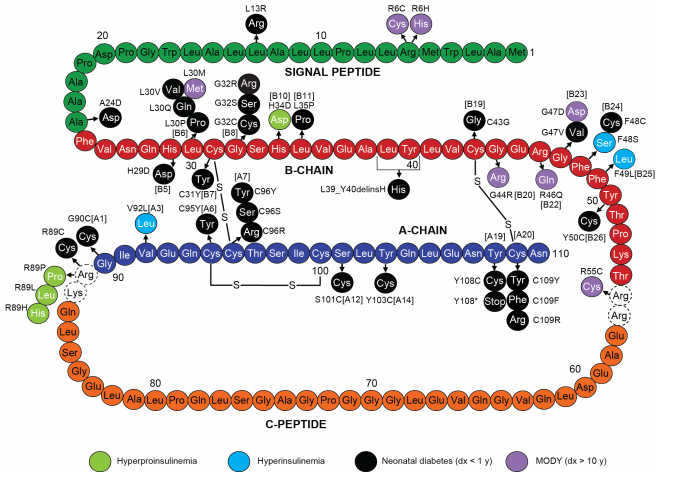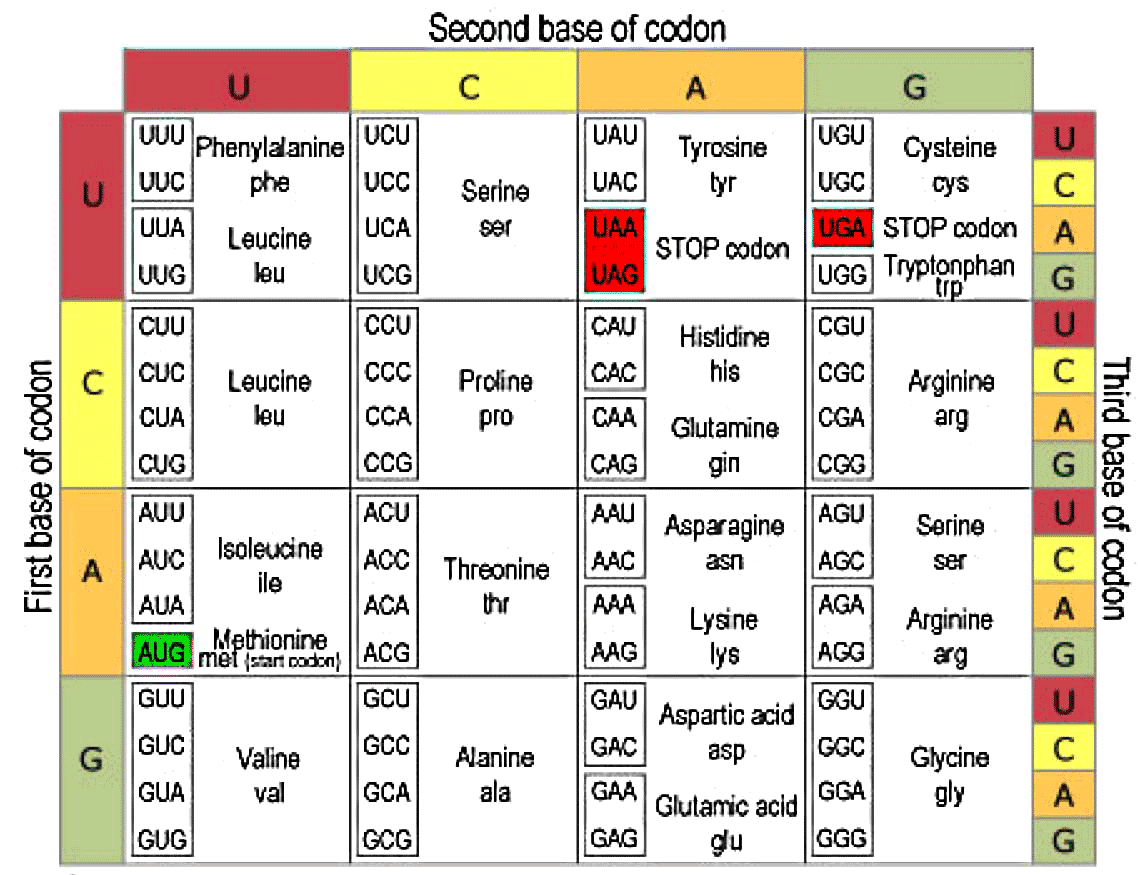Question #818ab
1 Answer
Short answer: in the form of Codons: three-letter codes that specify the identity of amino acids, the building blocks of Proteins.
Explanation:
I think an explanation about the importance of Enzymes lies outside the scope of this question, but in their role as catalysts they basically are the essence of Life.
(Having said that, it's actually more about the processes & reactions they govern, but there you go...)
Like other proteins, enzymes are constructed as a chain of amino acids. A bit like the pearls in a necklace.
No matter what organism you study, be it a Sequoia tree from California, the Duckbill Platypus from Australia, Lichen from some rock in northern Lapland, the humble Proteus Vulgaris bacteria or whatever, if you hydrolyse its total protein content: You will always find the same 20 Amino Acids. No more, no less!
These are called the Proteinogenic Amino Acids (AA's), and they are:
ALA = Alanine;
ARG = Arginine;
ASN = Asparagine;
ASP = Aspartate (Aspartic Acid);
CYS = Cysteine;
GLN = Glutamine;
GLU = Glutamate (Glutamic Acid);
GLY = Glycine;
HIS = Histidine;
ILE = IsoLeucine;
LEU = Leucine;
LYS = Lysine;
MET = Methionine;
PHE = PhenylAlanine;
PRO = Proline;
SER = Serine;
THR = Threonine;
TRP = Tryptophane;
TYR = Tyrosine;
VAL = Valine.
(Actually, in recent times it seems three others have been found, though it seems they are made by modifications of the original AA.)
The identity of the Enzyme is defined by the sequence of the AA's in the chain, like in this verion of Human Insulin:

The Sequence of these AA's in the chain is ultimately determined by the sequence of the Purine and Pyrimidine bases in the encoding DNA-strand. For each AA, there is a three-letter code called a CODON. Some AA's are coded for by more than one codon.
If you have a look at the codon-table below, you will notice that three are coloured red: they are STOP-codons, signalling the end of the chain. You will also notice the green codon (AUG), which is usually the Start Codon. At least, it was in my time....

To keep this answer short I won't go into the transcription process (DNA
There are 64 possible tRNA's, but the beauty is that each and everyone tugs the correct AA behind them, as proscribed by the codon in their "bowsprit".
Some AA's are being coded for by more than one codon: look up Leucine in the table above....
This might have to do with Leucine residues tagged for modification afterwards like recently seems to have been discovered for Cysteine, but I'm afraid I can't give you a definite answer on that. Wouldn't surprise me, though, as Leucine is one of the larger and more complicated AA's.
Better leave it here, I hope this has clarified some things, but it probably will have raised a few more questions....
Addendum:
- Forgot to mention:
This translation table is known as the "Standard". it most definitely is the one used for Human Nuclear DNA, but alternative translation tables have been found in other species, and most notably in Human Mitochondria
The AGA- and AGG-codons for example code for ARG in the Nuclear
DNA machinery. In Human Mitochondria however, they are regarded as Stop-codons....

